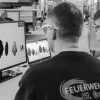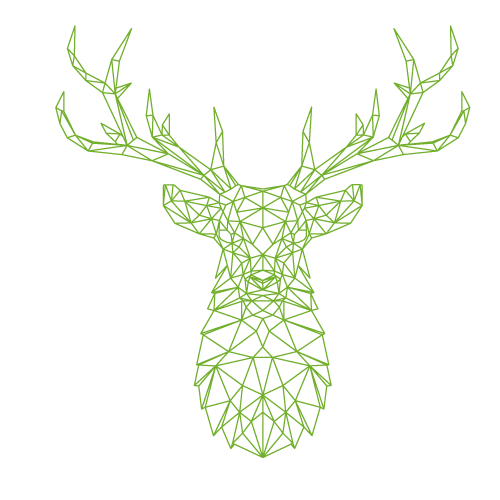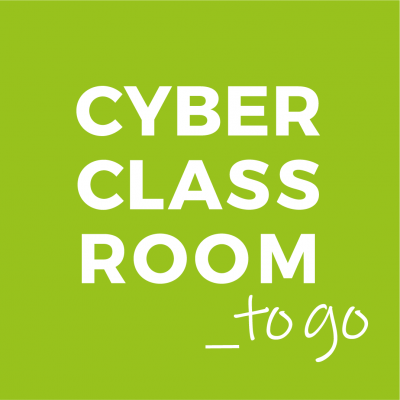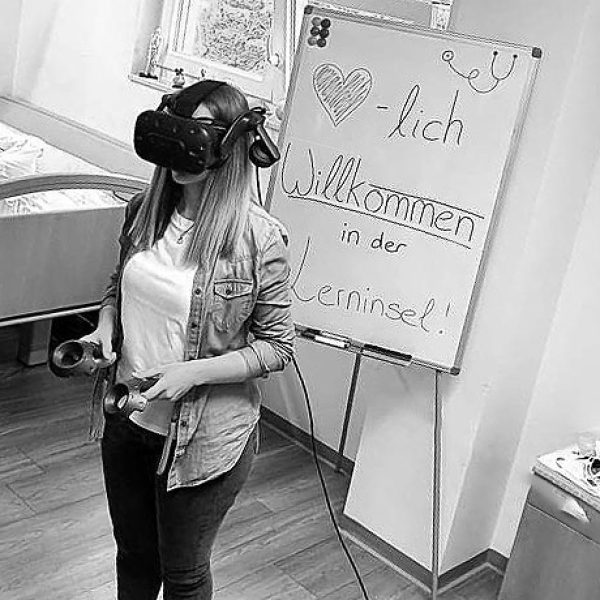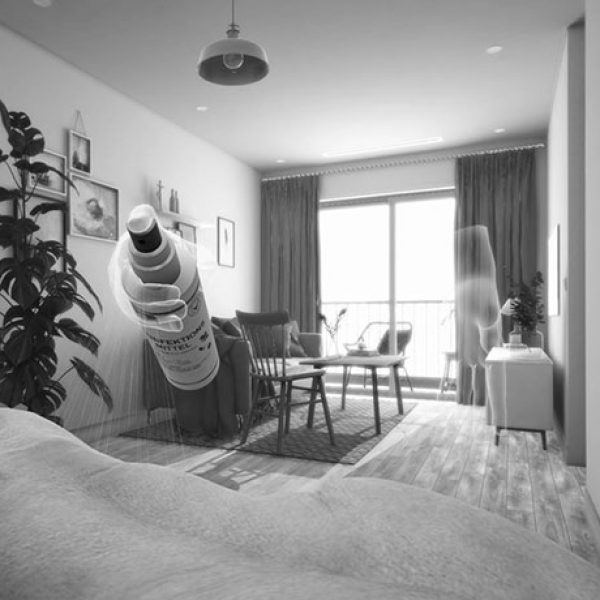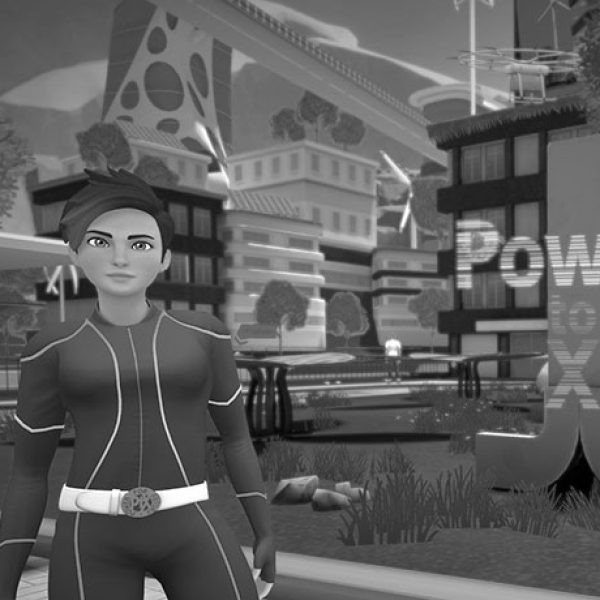VR ist mehr als Brille!
Mit den Bundles #VR4school und dem CyberClassroom geben wir Ihnen flexible digitale Werkzeuge zur Unterrichtsgestaltung an die Hand. Die Komplettlösungen bestehend aus verschiedenen Virtual Reality (VR)-Lernmodulen ermöglichen es, Unsichtbares sichtbar zu machen und tiefenwirksame Einblicke in Lerninhalte zu schaffen.
Komplexe (MINT-)Themen werden mit Hilfe von interaktiven 3D-Echtzeit-Lerneinheiten immersiv erlebbar und begreifbar gemacht. Beispielsweise werden Einblicke in das Innere und die Prozesse eines Herzens, eines Ohrs, einer Pflanze oder einer Maschine möglich gemacht. Außerdem sind in der Realität „unsichtbare“ Vorgänge, wie in der Chemie oder Physik, räumlich darstellbar.
Die Wissensvermittlung an Hand VR-Simulationen bietet neue, ergänzende und nachhaltige Anreize, sich mit den Lernstoffen zu befassen. Innerhalb der Inhalte haben Lehrende oder Lernende die Möglichkeit, interaktiv mit den 3D-Modellen zu arbeiten und sich die Prozesse individuell zu visualisieren.
VR4school | Komplettpakete
LERNERFAHRUNG DURCH VIRTUAL REALITY IM SCHULUNTERRICHT
Haben Sie noch Fragen? Dann kontaktieren Sie uns gerne über das Kontaktformular oder laden Sie sich unsere VR4schools Broschüre für weitere Informationen herunter.
IHR PROFI-START FÜR VIRTUAL REALITY IM UNTERRICHT
VR in Schulen ist Neuland. Das Problem: Bisher musste alles selbst zusammengestückelt werden. Es gab keine ganzheitliche Empfehlung und Architektur inklusive didaktischer Aspekte, die es Schulen ermöglichte VR schnell und effizient ihrem Curriculum entsprechend einzuführen.
Die Lösung: Plug and Play: Ein All-in-One-Paket – von Lehrern für Lehrer. Aufbauend auf der Erfahrung aus Industrieanwendungen und langjähriger gemeinsamer Pionierarbeit in einem offenen Innovationsprozess. Mit empfohlener Standard VR Hard- und Software inklusive Support.


Die Unterrichtspakete: In Kooperation mit intel Cooperation stellen wir passgenaue VR-Unterrichtseinheiten – u.a. für die MINT-Fächer Biologie und Chemie zur Verfügung.
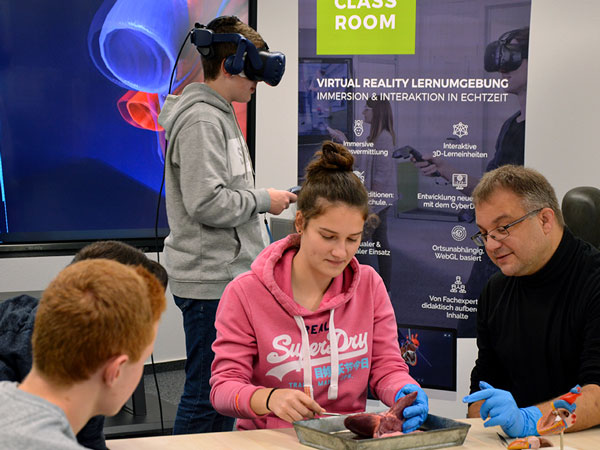
Die ausgereifte technische und didaktische Extended Reality Lernlösung
Die Komplettlösung VR4schools beinhaltet die VR-Simulationen des Online-CyberClassroom mit vordefinierten, in sich abgeschlossenen VR-Lerneinheiten für allgemeinbildende und berufliche Schulfächer. Die Einzelmodule wurden von Didaktik-Experten, Medienpädagogen sowie Fachlehrern gemeinsam mit VR-Technologen konzipiert und umgesetzt. Auch die Entscheider aus Schulleitungen, Kommunen und Bildungspolitik sowie die Endanwender – die Schülerinnen und Schüler selbst als wichtigste Zielgruppe – haben die VR-Lerneinheiten mit ihren Anforderungen mitgestaltet. Zu den verfügbaren Lernmodulen ist die eigene individuelle Erstellung und Integration von 3D-Daten möglich.
Leistungsstarke und flexibel einsetzbare Hardware
Die Anforderungen digital unterstützter Bildung an mobile und stationäre Endgeräte sind vielfältig. Sie müssen bei langer Akkulaufzeit flexibel nutzbar und leistungsfähig sein und für unterschiedlichste Anwendungsgebiete funktionieren. Intel Education empfiehlt den Einsatz von langfristig leistungsstarken Geräten mit Intel® Core™ Prozessoren. Digital unterstützter Unterricht sollte ruckelfreie Freude bereiten und seine Wirksamkeit voll entfalten. Geräte mit Intel® Core™ Prozessor gibt es für jeden Einsatzzweck, jedes Budget. Die Konfiguration der Komponenten des VR4schools Bundles erhalten Sie in unterschiedlichen Preis- und Ausstattungsvarianten für Ihren Einsatzzweck. Diese Investition ist schon heute umsichtig und zukunftssicher.
Best Practice – VR-Lerneinheit „Herzkreislauf“ im Biologieunterricht
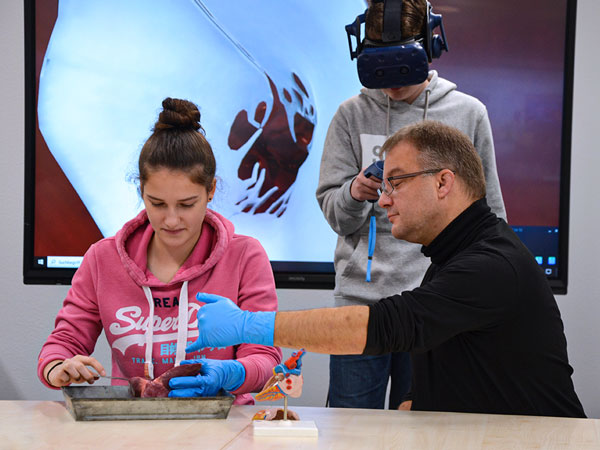
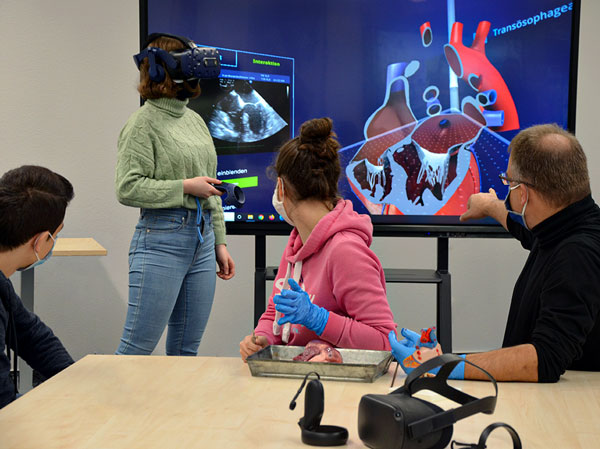
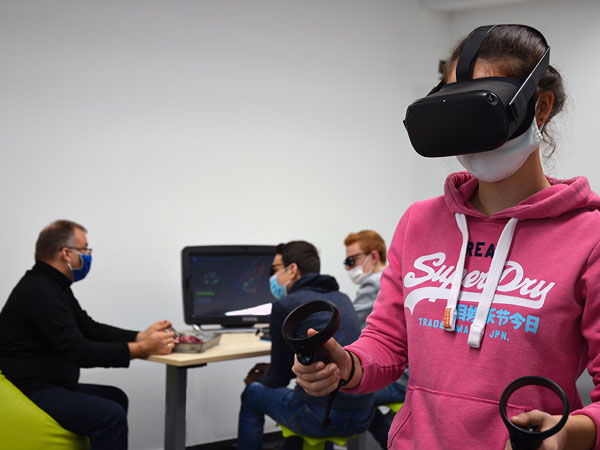

1 leistungsstarker Laptop mit Intel® Core™ i7 Prozessor für die Nutzung einer VR-Brille
1 VR-Brille “HTC Vive Pro” mit Trackingsystem und Stativen (alternativ fest verbaut im Raum mit Wandhalterungen)
1 leistungsstarker Laptop mit Intel® Core™ i7 Prozessor für die Nutzung einer VR-Brille
1 VR-Brille “HTC Vive Pro” mit Trackingsystem und Stativen (alternativ fest verbaut im Raum mit Wandhalterungen)
1 Klassensatz Convertible PC´s (two-in-one) für Lehrer, Lernbegleiter und Schüler
1 leistungsstarker Laptop mit Intel® Core™ i7 Prozessor für die Nutzung einer VR-Brille
1 VR-Brille “HTC Vive Pro” mt Trackingsystem und Stativen (alternativ fest verbaut im Raum mit Wandhalterungen)
1 Klassensatz Convertible PC´s (two-in-one) für Lehrer, Lernbegleiter und Schüler
1 interaktives 24 Zoll 3D-Stereo fähiges “CyberLearnIT Touch” Display für die Arbeit im Team mit 2-3 Personen
1 Interaktives 86 Zoll großes 3D-Stereofähiges “CyberLearnIT Touch” Display mit Intel® NUC Mini-PC (Intel® Core™ vPro® Prozessor)) auf Pylonen für die Nutzung als Tafelersatz oder die Arbeit in größeren Gruppen. Der integrierte PC kann vom Lehrer über die
Intel(R) Unite für direktes Screensharing von den Convertible PC´s oder dem 24“ Touch Display genutzt werden.
1 Klassensatz Cardboards (VR-Brillen aus Karton) für das kabellose, mobile Lernen in VR mit eigenem Smartphone und CyberClassroom_toGo App
1 Action Cam für Schülerprojekte zur Erstellung und Bearbeitung von 360 Grad 2D- oder 180 Grad 3D-Filmen
Eine Plattform
mit vielen Hardwaremöglichkeiten
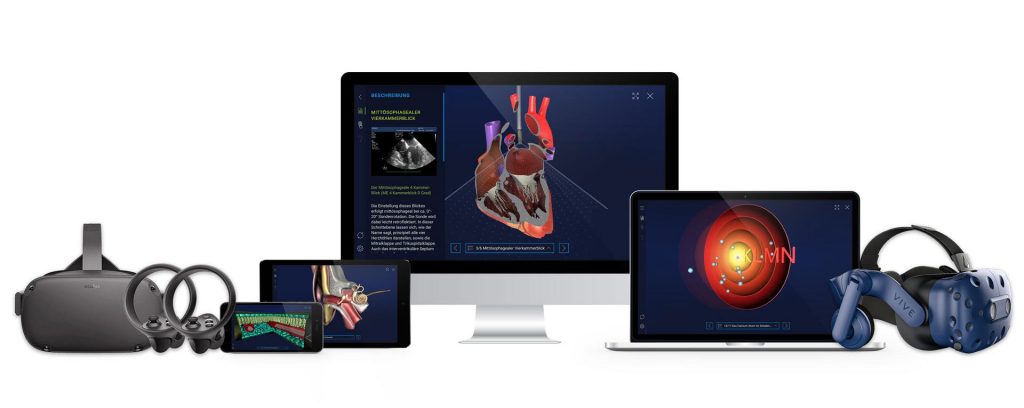
Überblick
Das macht VR4school aus
VR4school | Unterichtspakete
LEITFÄDEN FÜR LEHRKRÄFTE
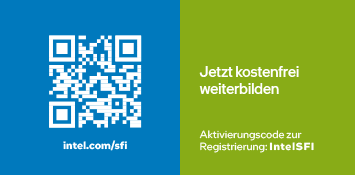
In Kooperation mit intel Corporation für das kostenfreie Programm Intel® Skills for Innovation stellen wir passgenaue VR-Unterrichtseinheiten – u.a. für die MINT-Fächer Biologie und Chemie zur Verfügung.



